
Invisalign® represents a modern approach to orthodontic care that emphasizes discretion, comfort, and predictable results. Rather than wires and brackets, treatment uses a series of clear, removable aligners that guide teeth into healthier, more attractive positions. For many people, this means achieving a straighter smile with minimal disruption to daily life and a treatment experience that fits more naturally into busy routines.

Invisalign® for Teens

Invisalign® for Brides

Invisalign® for Travelers
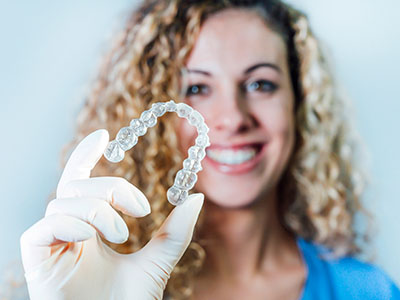
Before & After Photos
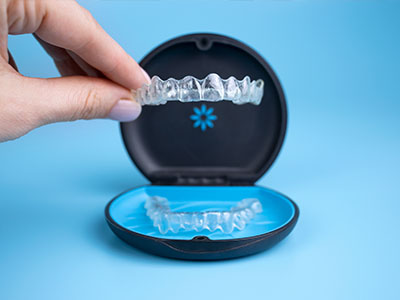
Invisalign® Videos
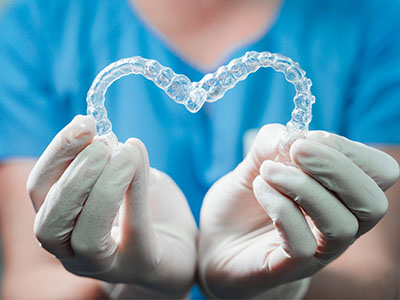
FAQs
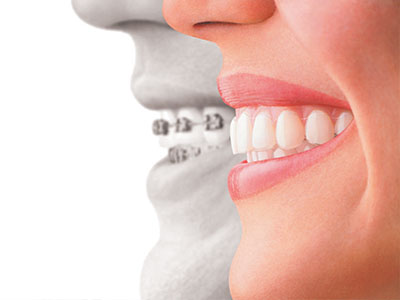
Invisalign® vs Braces
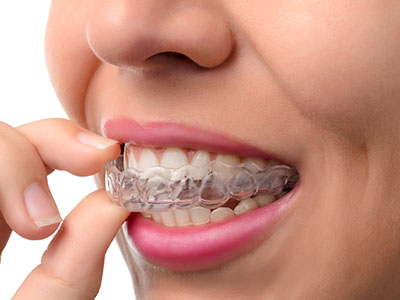
Invisalign® vs Direct-To-Consumer Aligners
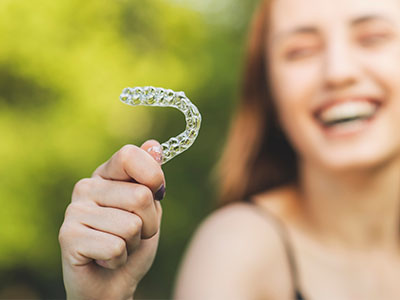
Is Invisalign® Right For Me?
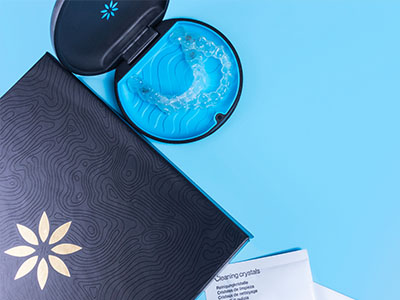
Invisalign® Costs
Clear aligner therapy is grounded in digital planning and incremental movement. Advanced 3-D imaging and modeling allow clinicians to visualize each stage of tooth movement before treatment begins, creating a roadmap that translates into a tailored series of aligners. This planned progression helps reduce surprises and gives patients a clear sense of what the treatment will achieve from start to finish.
Because the aligners are nearly invisible when worn, many adults and teens choose this option for its aesthetic benefits. The removable design also supports everyday oral hygiene: brushing and flossing remain straightforward, and there are no food restrictions tied to fixed appliances. Patients typically appreciate that clear aligners let them maintain familiar habits while still following an effective orthodontic plan.
Despite the cosmetic advantages, aligner therapy is a clinical solution first. Aligners address a broad range of alignment and bite concerns when prescribed and monitored by a qualified provider. Careful assessment and regular check-ins ensure movements happen in a controlled, healthy way that supports long-term oral function as well as appearance.
The foundation of effective aligner therapy is precise planning. A modern treatment starts with digital scans or impressions to capture the current position of teeth and jaws. Those records become the basis for a step-by-step plan that maps how each tooth should move to reach the desired outcome—every slight shift is accounted for in the sequence of aligners you will wear.
That plan is reviewed and adjusted by your dental team to match your dental health and goals. Orthodontic movements can be fine-tuned using attachments, interproximal reduction, or staged approaches that address complex needs incrementally. The collaborative process between patient and provider helps ensure both the aesthetic and functional aspects of the bite are considered.
Throughout treatment, aligners are swapped on a regular schedule to keep progress moving forward. Periodic visits allow your clinician to verify alignment, make any necessary mid-course corrections, and confirm that oral health is maintained. This oversight is an important part of predictable, safe treatment and helps protect long-term results.
Wearing clear aligners requires some routine and attention, but most patients find the daily demands manageable. Aligners are intended to be worn for the majority of the day—typically removed only for eating and oral hygiene. Because they’re removable, you can continue enjoying the foods you normally eat and maintain your usual brushing and flossing habits without extra tools or techniques.
Caring for your aligners is straightforward: rinse and brush them gently, and store them in their case when not in use. Proper cleaning helps prevent staining and keeps appliances hygienic. As your teeth move, minor soreness or tightness is normal during the first day or two after switching to a new aligner; this sensation generally subsides quickly as the mouth adjusts.
Communication with your dental team will help address common questions about comfort, wear time, or managing travel and social events while in treatment. The goal is to keep therapy unobtrusive so you can continue daily life confidently while your smile evolves.
Clear aligners can address a broad spectrum of alignment issues, from mild crowding and spacing to certain bite irregularities. They work well for many adults and adolescents who seek a less visible alternative to traditional braces. Suitability depends on the specifics of tooth position, bite relationships, and overall dental health, so a thorough clinical evaluation is the best way to determine whether aligners are the right choice.
Complex cases—such as severe skeletal discrepancies or very complex tooth movements—may require a combined approach or different orthodontic strategies. In those situations, aligners may still play a role as part of a larger treatment plan. An experienced provider can explain limitations honestly and propose the most appropriate path to a stable, functional result.
Age is not the only consideration; commitment to wearing the aligners as instructed and maintaining oral hygiene are key factors for success. Patients who follow the prescribed wear schedule and attend follow-up visits typically experience smoother progress and more reliable outcomes.
Achieving a straight smile is an important milestone, but retaining those results requires attention after active movement ends. Retention—typically with a retainer—helps prevent teeth from drifting back toward their original positions. Your provider will recommend a retention plan tailored to your circumstances, which may include full-time wear initially and a long-term nighttime schedule.
Ongoing dental care supports both the health and appearance of your smile. Regular check-ups, cleanings, and monitoring of retainers ensure that alignment remains stable and that any restorative or periodontal considerations are addressed. Coordinating orthodontic and general dental care helps protect the investment in your smile over time.
When orthodontic treatment is guided and supervised by a skilled clinician, it reduces the risk of unintended consequences and improves predictability. Providers with experience in aligner therapy bring clinical judgment to each case—balancing cosmetic goals with bite function, oral health, and overall treatment longevity. At Fay Hu General Dentistry, we combine contemporary orthodontic options with comprehensive care to support lasting, healthy results.

A consultation establishes priorities and evaluates oral health. During this visit, your clinician reviews your smile goals, performs an exam, and explains how clear aligners could address your needs.

Digital scanning captures your current alignment and allows the team to design a stepwise plan. You’ll see a visualization of proposed movements before any aligners are made.
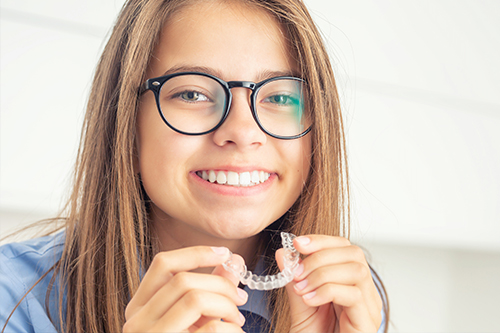
Aligners are manufactured to the exact specifications of your plan using advanced materials. The result is a series of trays engineered for fit and gradual, controlled tooth movement.

From your first aligners to the completion of treatment, your provider monitors progress and advises on retention strategies to help preserve your new smile.
*Invisalign® is a registered trademark of Align Technology, Inc.
Ready to learn more about whether clear aligners are right for you? Contact us to schedule a consultation and discuss a treatment approach that fits your life and smile goals.

There are many options for patients who want to avoid metal braces! The most popular alternative orthodontic treatment is Invisalign®, which are clear plastic aligners designed to straighten teeth. After an examination of your teeth, your dentist will determine which option is best suited to your wants and needs.
According to the Invisalign® website, the cost for treatment is approximately the same as the cost for metal braces. A portion of this cost may be covered by your insurance. Please call us to set up a consultation and discuss potential payment plan options.
The first step is to schedule a consultation with your doctor, so they can devise a treatment plan that is best suited to your individual dental needs. Once approved, you will receive your first set of aligners. Your doctor will then regularly monitor the movement of your teeth and new aligners will be ordered according to the progress made in your treatment plan.
Invisalign® aligners are made of clear, flexible plastic. The company received a patent for this material – SmartTrack® – to be used exclusively for Invisalign treatment purposes. These aligners are FDA approved and nearly invisible!
Your doctor will give you an estimate regarding how long your Invisalign® treatment should take, which will depend on your specific needs. The average length of time for treatment is approximately 12-18 months. However, some patients may see results far sooner. Remember to wear your aligners exactly as instructed by your doctor to obtain the best results.
Your doctor will most likely recommend that you wear retainers following your Invisalign® treatment. This is a precaution that will prevent your teeth from shifting back to their original positioning. It is important to follow your doctor's instructions exactly to ensure long-lasting results.
You must wear your aligners for up to 22 hours daily. You may remove them for eating, drinking and regular oral hygiene.
No. Unlike braces, you may eat whatever you like as long as you remove the aligners before eating. Prior to placing the aligners back on, it is important to brush your teeth and the aligners after you eat.
Like any orthodontic treatment, there is a short adjustment period. The more you speak with the aligners on, the quicker you will adjust.
There will be some pressure and minor discomfort for a day or two after each initial insertion. This is a sign that your teeth are moving sequentially into their final position.
It is recommended that you remove your aligners prior to chewing gum as the gum will stick to the aligners.
We discourage smoking with aligners as the cigarette smoke will tend to discolor them.
Brushing them with toothpaste will keep them fresh and clean.
Regular office visits are every five to six weeks. This will ensure that your Invisalign treatment is progressing as planned.
All orthodontic patients are instructed to wear their retainers at night indefinitely. Sleeping with your retainers in at night will ensure a healthy bite and maintain the new position of your teeth.
Yes, if their teeth, including second molars, have grown in completely.
Invisalign® is a clear aligner system that straightens teeth using a series of custom-made, removable trays. Modern treatment begins with a precise digital scan and 3-D computer imaging to map tooth movement for the entire case. Each aligner is designed to move specific teeth incrementally toward the planned final positions.
Because the aligners are nearly invisible, many patients prefer them when aesthetics matter during treatment. They are removable for eating and oral hygiene, which helps maintain gum and tooth health. Clinical data and iterative engineering help improve aligner fit and movement predictability over time.
Treatment starts with a consultation during which the dentist evaluates your bite, discusses goals, and captures a digital scan or impressions of your teeth. That information is used to create a step-by-step digital treatment plan that shows how your teeth will move and what the final result should look like. You will review the plan with your provider before the custom aligners are manufactured.
Once your aligners arrive, you typically wear each tray for a prescribed period before switching to the next one in the series, following the schedule set by your provider. Periodic check-ins allow the dentist to monitor progress and make refinements if needed. At the end of active alignment, retention strategies are used to preserve the new position of your teeth.
Invisalign® is suitable for many adults and teenagers with mild to moderate alignment issues, such as crowding, spacing, and some bite concerns. Complex skeletal issues or severe bite discrepancies may require additional orthodontic techniques or combined treatment approaches, which your dentist will identify during evaluation. A thorough oral exam and diagnostic records help determine the most appropriate option for each patient.
Successful treatment also depends on patient commitment to wearing the aligners as instructed and maintaining good oral hygiene. Health conditions that affect the mouth, such as active periodontal disease, should be addressed before starting aligner therapy. Your dentist will discuss any needed preparatory care and confirm candidacy during the consultation.
Providers commonly recommend wearing Invisalign® aligners for 20 to 22 hours per day, removing them only for eating, drinking anything other than water, and cleaning. Consistent wear is essential because each aligner is designed to deliver a specific amount of movement over a set period. Missing time in the aligners can slow progress and may require returning to a previous aligner or making adjustments to the plan.
If you occasionally forget to wear your aligners, resume the prescribed schedule as soon as possible and inform your provider at your next visit. The dentist can evaluate whether to continue with the current sequence, repeat a step, or revise the treatment timeline. Clear communication and adherence to instructions help keep treatment predictable and efficient.
Proper care preserves aligner clarity and prevents odors or staining; rinse aligners with lukewarm water each time you remove them and brush them gently with a soft toothbrush. Avoid hot water, which can warp the plastic, and do not use harsh chemical cleaners that could damage the material. Specialized cleaning crystals or gentle, nonabrasive solutions recommended by your provider can be used periodically to keep aligners fresh.
When not wearing your aligners, store them in their protective case to prevent loss or damage and to reduce bacterial exposure. Maintain your regular oral hygiene routine by brushing and flossing before reinserting the trays to minimize plaque buildup. Bring your aligners to appointments if your dentist requests an in‑office inspection or adjustment.
Attachments are small, tooth-colored bumps bonded to select teeth to give the aligner more grip and enable specific movements such as rotations or extrusions. Elastics are tiny rubber bands sometimes used in conjunction with aligners to correct bite relationships by applying additional directional force. Both tools extend the range of tooth movements that clear aligner therapy can accomplish.
Your dentist will explain whether attachments or elastics are necessary as part of your customized treatment plan and will show you how to place and manage elastics if required. Attachments are removed or adjusted as treatment progresses, and elastics are typically worn according to a specific schedule. Proper use of these auxiliaries is important for meeting treatment goals on schedule.
Invisalign® and traditional braces both move teeth effectively, but they differ in design and management; Invisalign® uses removable clear trays while braces use fixed brackets and wires. Clear aligners offer easier hygiene and greater aesthetic discretion because they are less visible and can be removed for eating and cleaning. Braces may be preferred for certain complex tooth movements or severe bite corrections that require continuous, multi-directional forces.
Choice of method depends on the specific dental goals, clinical complexity, and the patient’s willingness to comply with a wear schedule. Your dentist will review the mechanics, expected outcomes, and practical considerations for both options during treatment planning. Many adults choose aligners for cosmetic reasons, but the clinical recommendation should prioritize the most reliable path to a healthy, functional result.
Progress visits are typically brief and scheduled every four to eight weeks, although intervals vary by case and provider preference. During these visits the dentist assesses tooth movement, checks fit of the current aligner, and verifies that attachments or other auxiliaries are functioning as planned. Small refinements or midcourse corrections can be made if the teeth are not tracking as expected.
These appointments are an opportunity to ask questions about comfort, wear schedule, or oral hygiene, and to receive any necessary support or troubleshooting. The dentist may provide the next sets of aligners or authorize a digital refinement phase if additional movement is required. Regular monitoring helps maintain steady progress and reduces the likelihood of surprises at the end of active treatment.
Yes, retainers are an essential part of maintaining tooth position after active Invisalign® therapy because teeth have a natural tendency to shift over time. Retention plans vary by case and may include removable retainers worn nightly or fixed bonded retainers placed behind the teeth. Your dentist will recommend a retention strategy tailored to your treatment outcome and risk of relapse.
Adhering to the retention protocol preserves the investment in alignment and helps ensure long-term stability. Periodic checkups after treatment allow your provider to monitor the retainers and the overall health of your teeth and gums. If changes occur, the dentist can advise on options to maintain or restore alignment as needed.
Treatment duration depends on the complexity of the case, the amount of tooth movement required, and the patient’s adherence to the prescribed wear schedule. Many straightforward cases complete in several months to about a year, while more involved cases can take longer depending on dental and skeletal considerations. The initial digital treatment plan provides an estimated timeline, but that estimate can change if refinements are needed during the course of care.
Factors that influence timing include the need for additional dental work before or during alignment, the use of auxiliaries like attachments or elastics, and the patient’s consistency in wearing the aligners. Regular follow-up visits and clear communication with the dentist help keep treatment on track. For patients in the Winter Park area seeking clear aligner care, the team at Fay Hu General Dentistry can explain expected timelines during the consultation.

We are dedicated to providing the highest quality of dental care to our patients.
Through excellence in dentistry and quality in relationships, we strive to positively impact your oral health, aesthetics, and self-esteem. From the front desk to the treatment room, our experienced team is here to support you with expert care and genuine compassion.